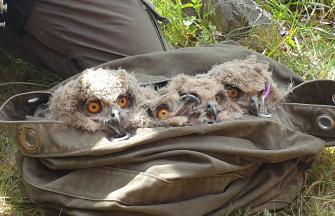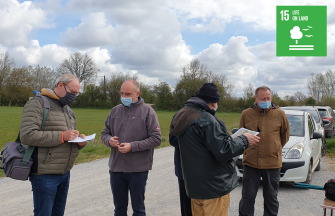
The land that Carmeuse operates on is our life. While we remove resources that contribute to humankind, it is also our responsibility to give back. When our quarries reach their end of life, we place great emphasis on the restoration of nature and enhancement of biodiversity. Just as important during the operation of our quarries, we cater to the prosperity of wildlife, as our quarries form an exceptionally rare habitat where an abundant number of species can develop. We invest in biodiversity management measures like taking care of water quality, planting trees, creating sheds and ponds, and incorporating programs that bring back wildlife. We continually promote biodiversity through partnering with groups to ensure wildlife habitats are not disrupted. And lastly, we invest in community projects that promote greenspaces, nature education and land restoration.

Cooperation for biodiversity
This year, Carmeuse is celebrating 30 years of cooperation with the Royal Belgian Institute of Natural Sciences. A very fruitful cooperation that has allowed the observation and protection of several vulnerable bird species that have found in our quarries the right conditions for their development.
Just before International Biodiversity Day, four beautiful Grad-Duc owl chicks that were born in our quarry were given a tracking ring and then released back to their nests and parents. Monitoring them allows the Royal Institute to observe the evolution of the population of this species which had completely disappeared from Belgium. Also, it allows us to better understand the biological richness that is found in our quarries and to understand how to integrate their presence in the quarry exploitation plans. Grand-Duc owls have been nesting in the quarry walls at Seilles, Belgium, since the mid-1990s.






